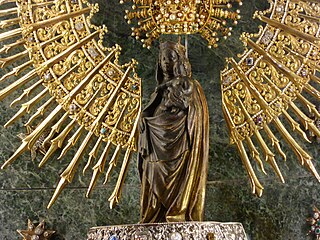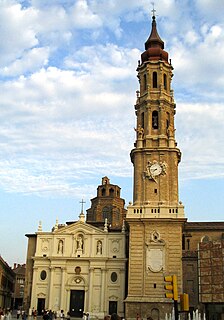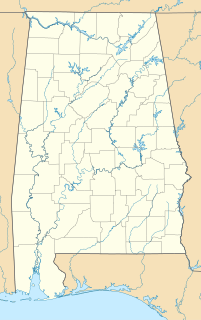
Zaragoza, also called Saragossa in English, is a province of northern Spain, in the central part of the autonomous community of Aragon. Its capital is Zaragoza, which is also the capital of the autonomous community. Other towns in Zaragoza include Calatayud, Borja, La Almunia de Doña Godina, Ejea de los Caballeros and Tarazona.

Count Jan Potocki was a Polish nobleman, Polish Army Captain of Engineers, ethnologist, Egyptologist, linguist, traveler, adventurer, and popular author of the Enlightenment period, whose life and exploits made him a legendary figure in his homeland. Outside Poland he is known chiefly for his novel, The Manuscript Found in Saragossa.

The Manuscript Found in Saragossa is a frame-tale novel written in French at the turn of 18th and 19th centuries by the Polish author Count Jan Potocki (1761–1815). It is narrated from the time of the Napoleonic Wars, and depicts events several decades earlier, during the reign of King Philip V.

Saint Vincent of Saragossa, the Protomartyr of Spain, was a deacon of the Church of Saragossa. He is the patron saint of Lisbon and Valencia. His feast day is 22 January in the Roman Catholic Church and Anglican Communion and 11 November in the Eastern Orthodox Churches. He was born at Huesca and martyred under the Emperor Diocletian around the year 304.

Our Lady of the Pillar is the name given to the Blessed Virgin Mary in the context of the traditional belief that Mary, while living in Jerusalem, supernaturally appeared to the Apostle James the Greater in AD 40 while he was preaching in what is now Spain. Those who adhere to this belief consider this appearance to be the only recorded instance of Mary exhibiting the mystical phenomenon of bilocation. Among Catholics, it is also considered the first Marian apparition, being unique due to having occurred while Mary was still living on Earth.

Fuendetodos is a town in the Campo de Belchite comarca (county), in Aragon, Spain, located about 44 kilometers south-east of Zaragoza. As of 2011, it had a population of approximately 178.

The Benveniste famiy is an old, noble, wealthy, and scholarly Jewish family of Narbonne, France and northern Spain established in the 11th century. The family was present in the 11th to the 15th centuries in Hachmei Provence, France, Barcelona, Aragon and Castile Spain.
The Saragossa Manuscript is a 1965 Polish film directed by Wojciech Has, based on the 1815 novel The Manuscript Found in Saragossa by Jan Potocki. Set primarily in Spain, it tells a frame story containing gothic, picaresque and erotic elements. In a deserted house during the Napoleonic Wars, two officers from opposing sides find a manuscript, which tells the tale of the Spanish officer's grandfather, Alphonso van Worden. Van Worden travelled in the region many years before, being plagued by evil spirits, and meeting such figures as a Qabalist, a sultan and a Romani person, who tell him further stories, many of which intertwine and interrelate with one another.
Siege of Saragossa may refer to:

The second siege of Zaragoza was the French capture of the Spanish city of Zaragoza during the Peninsular War. It was particularly noted for its brutality. The city had never stood a chance. However, the desperate resistance put up by the Army of Reserve and its civilian allies had been heroic: a great part of the city lay in ruins, the garrison had suffered 24,000 deaths being augmented by 30,000 civilians dead.

The Archdiocese of Saragossa is a Roman Catholic ecclesiastical territory located in north-eastern Spain, in the province of Zaragoza, part of the autonomous community of Aragón. The archdiocese heads the ecclesiastical province of Saragossa, having metropolitan authority over the suffragan dioceses of Barbastro-Monzón, Huesca, Tarazona, and Teruel and Albarracín.

Móra d'Ebre is the capital of the comarca of the Ribera d'Ebre in Catalonia, Spain. It is situated on the right bank of the Ebre river in the Móra Hollow, and is served by the N-420 road to Reus and Gandesa, the N-230 road to Lleida. The RENFE railway line between Tarragona and Saragossa runs along the left bank of the river, with a station at Móra la Nova opposite the urban centre of Móra d'Ebre.

Saint Valerius of Saragossa is the patron saint of Saragossa. He was bishop of this city from 290 until his death. He assisted at the Council of Elvira. His feast day is January 29.
Saragossa is a genus of moths of the family Noctuidae.
Israel Aaron was an American rabbi and scholar. His father was a native of Hesse-Darmstadt, where he served many years in the army, holding several minor military offices. After leaving the High School Israel, Aaron entered the Hebrew Union College at Cincinnati. From 1883 to 1887 he was rabbi at Fort Wayne, Indiana, and since 1887 was at Buffalo, New York. He wrote on "The Relation of the Jews and Arabs to the Renaissance," and "The Megillah of Saragossa," in the "Menorah"; also translations of Franz Delitzsch's "Colors in the Talmud" and J. Stern's "Woman's Place in the Talmud."
Heraldo de Aragón is a Spanish language regional daily newspaper published in Saragossa, Spain.

The Consecration of Aloysius Gonzaga as patron saint of youth is a c.1763 painting attributed to Francisco de Goya and now owned by the town of Jaraba but stored in the Saragossa Museum in Saragossa.

Saragossa is an unincorporated community in Walker County, Alabama, United States.
Opel Szentgotthárd is a manufacturing company that belongs to Opel.